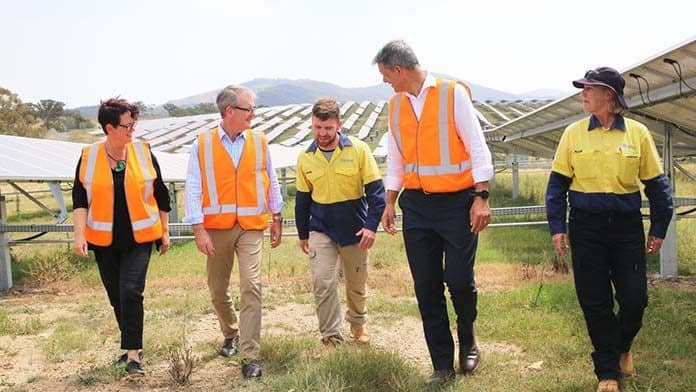The world is facing a climate emergency, with the need for a completely zero carbon economy within 30 years.
We are already seeing extreme weather events. Roebourne in Western Australia has recorded its highest ever March temperature of 48.1 degrees and much of the country is still in drought.
Scott Morrison’s only response is a pathetic $2 billion over ten years for the Tony Abbott-era plan to pay farmers and businesses to reduce emissions. Morrison even faces demands from the Nationals to fund a new coal power station.
The high school Strike for Climate has inspired enormous support. Over 20 unions have now endorsed it and, in some places, workers will be walking off the job to attend.
Student activists at Sydney Uni passed motions in over 60 classes and lectures to either support the strike or walk out of class. NTEU staff expressed their support and voted not to penalise students for striking. And in response to the pressure, university management sent an email to all staff giving them permission to walk out of work to join it.
As Sydney Strike for Climate activist Aisheeya Huqwe told a meeting of NTEU members, “school strikers know that one of the groups we need to work with, are unions.” The movement needs, she said, “to organise power.”
“That we don’t have enough of. You talk about organising, about how you don’t have deep enough power in your workplaces. We, too, do not have deep enough power in our schools.”
Solutions
The most straightforward way to begin cutting emissions is to replace all the coal and gas-fired power stations with renewable energy.
Already new solar and wind power projects can provide cheaper power than a new coal power station. The existing coal power stations, with the cost of building them already paid for, remain cheaper to run.
But a rapid transition to 100 per cent renewable energy is now straight-forward.
In the lead up to the state election, the NSW Labor Party has released a plan for a significant ramp up of renewable energy, with the aim of installing 9000 megawatts by 2030.
Their plan to establish a new State Owned Corporation to directly build 1000 megawatts of renewable energy and storage has captured particular attention. This shows that it’s possible for governments to directly build and run renewable energy—exactly what’s needed.
But the bulk of the new renewable energy NSW Labor is proposing will be built by the private sector, and the cost recouped through ordinary people’s power bills. NSW Labor has the same aim as Bill Shorten federally of 50 per cent renewables by 2030.
New power generation is needed because a number of coal power stations in NSW are close to retirement age. But Labor’s plan would mostly leave it to the market to replace them.
This falls far short of what’s needed.
Labor leader Michael Daley has said that, “there still will be a place for coal in New South Wales for decades to come” and pledged that existing coal power stations “will see their lives to an end”. The NSW power station at Mt Piper is not scheduled to close until 2043.
And there would still be gas-fired plants operating to back up renewables—which also use fossil fuels.
Since 2014 the NSW state government has sold off coal power stations for $2.6 billion and the electricity grid that services them for $34 billion. Labor is not prepared to force them to close immediately, or to renationalise them. It accepts the idea that corporate investors should be allowed to keep them running to make profits.
The Student Strike for Climate and the NSW Greens have both backed the aim of 100 per cent renewable energy by 2030. The Greens are rightly saying that new renewable energy should be built under public ownership. This is the best way to guarantee cheaper power prices and plan a transition.
The Greens are also proposing a new state-owned electricity retail company to sell power to the public at cheaper prices. Privatisation has pushed up prices and should be reversed completely. An Australia Institute study in January showed that it is costing households $200 a year in extra sales staff and advertising budgets as privatised retail companies compete for customers.
We can’t afford to have increases in power bills. This is what allowed Tony Abbott and the Liberals to attack the carbon tax and undermine support for climate action. The carbon tax was designed to force the cost of the transition onto ordinary people’s power bills. To ensure 100 per cent renewable energy delivers cheaper power, government needs to pay for and build it.
Demands like this are capable of winning the support we need to force change—in unions and the working class.
By James Supple






